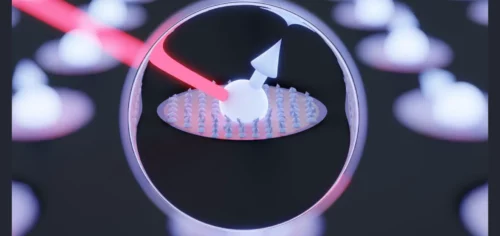A group of researchers have discovered methods to enhance the storage time of quantum information in a spin-rich material.

Spin-photon interfaces are elementary building blocks for quantum networks that allow converting stationary quantum information (such as the quantum state of an ion or a solid-state spin qubit) into light, namely photons, that can be distributed over large distances. A major challenge is to find an interface that is both good at storing quantum information and efficient at converting it into light.
An international team of scientists have made significant progress in preserving the quantum coherence of quantum dot spin qubits. Researchers at the University of Cambridge, the University of Linz, and the University of Sheffield have shown that there is a simple material’s solution to this problem that improves the storage of quantum information beyond hundred microseconds.
Quantum Dots are crystalline structures made out of many thousands of atoms. Each of these atoms’ nuclei has a magnetic dipole moment that couples to the quantum dot electron and can cause the loss of quantum information stored in the electron qubit. They discovered that in a device constructed with semiconductor materials that have the same lattice parameter, the nuclei ‘felt’ the same environment and behaved in unison. As a result, it is now possible to filter out this nuclear noise and achieve a near two-order magnitude improvement in storage time.
Researchers can switch off the interaction with nuclei and refocus the electron spin over and over again to keep its quantum state alive. They demonstrated hundreds of microseconds in their work. For spins in quantum dots, short coherence times were the biggest roadblock to applications, and this finding offers a clear and simple solution to that.
While exploring the hundred-microsecond timescales for the first time, the researchers were pleasantly surprised to find that the electron only sees noise from the nuclei as opposed to, say, electrical noise in the device. This is really a great position to be in because the nuclear ensemble is an isolated quantum system, and the coherent electron will be a gateway to quantum phenomena in large nuclear spin ensemble.
Quantum dots now combine high photonic quantum efficiency with long spin coherence times. Researchers expect these devices to enable the creation of entangled light states for all-photonic quantum computing and allow foundational quantum control experiments of the nuclear spin ensemble.
Reference: “Ideal refocusing of an optically active spin qubit under strong hyperfine interactions”, 26 January 2023, Nature Nanotechnology.
DOI: 10.1038/s41565-022-01282-2








